Autonomous power supply at home
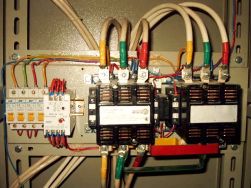 The problem with electricity in our homes has become, unfortunately, already commonplace. They can turn off electricity quite unexpectedly, without any warning. And imagine such a situation ... Winter. On the street, frost is under - 20, you go home, the snow crunches under your feet ... Come home, and there ... it's dark, the house is cool, uncomfortable ...
The problem with electricity in our homes has become, unfortunately, already commonplace. They can turn off electricity quite unexpectedly, without any warning. And imagine such a situation ... Winter. On the street, frost is under - 20, you go home, the snow crunches under your feet ... Come home, and there ... it's dark, the house is cool, uncomfortable ...
In this short article we will try to figure out how to avoid situations, so as not to be left without heat, so that your boiler functions at five plus.
If you are the lucky owners of a private house, to ensure uninterrupted power to the heating system, you can between the UPS on batteries and the gas or diesel generator. You decide. Consider the advantages and disadvantages of these alternative sources of electrical energy for autonomous power supply at home.Let's start with Uninterruptible Power Supply (UPS) ...
Homemade device for producing living and dead water
 The article gives a brief description of the properties and methods of using activated water. The description of the device of two devices for its preparation is given.
The article gives a brief description of the properties and methods of using activated water. The description of the device of two devices for its preparation is given.
Activated water is obtained by electrolysis of ordinary tap water. From the point of view of chemistry, living water has alkaline properties that have a healing effect, and dead water has acidic properties, so it has disinfecting properties. Passing through ordinary water, an electric current changes its internal structure and contributes to the erasure of harmful environmental information.
After treatment with electricity, water is divided into two fractions that have healing properties. In the treatment of the disease, live and dead water are taken in various combinations ...
Electronic thermostat for oil cooler
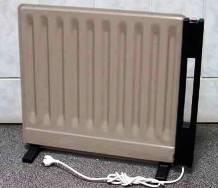 An article on how to replace a mechanical temperature regulator of an oil heating radiator.
An article on how to replace a mechanical temperature regulator of an oil heating radiator.
Quite often in everyday life you have to use oil radiators for heating. The heating temperature for such radiators is set using an electromechanical controller, the basis of which is a bimetallic plate - it controls the operation of the mechanical contact.
When such a regulator becomes unusable, it cannot be repaired in almost a hundred percent of cases. It becomes impossible to use a radiator without a temperature controller: either you need to manually turn it on periodically - turn it off, or sit and wait for a fire to happen. The semiconductor temperature controller described in this article will help get rid of this situation ...
How water conducts electricity
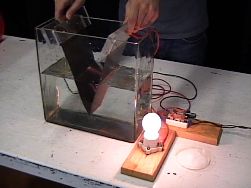 There are two types of charge carriers in substances: electrons or ions. The movement of these charges creates an electric current.
There are two types of charge carriers in substances: electrons or ions. The movement of these charges creates an electric current.
All metals are characterized by electronic conductivity. Violation of the crystal lattice impedes the movement of electrons (for example, when an impurity is added) and thereby increases the resistivity.
Liquids are characterized by ionic conductivity. Distilled water practically does not conduct current. But if you add a soluble salt to the water, which dissociates into ions, then the more salt and the greater part of it decomposes into ions, the higher the conductivity of the solution. This is the first factor affecting the conductivity (ion concentration) ...
Thermostats. The use of temperature controllers in everyday life
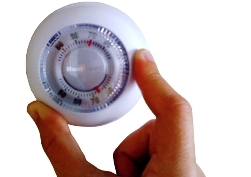 Temperature regulators - what is it? The name itself already shows that this is a device, a mechanism by which you can adjust the temperature.
Temperature regulators - what is it? The name itself already shows that this is a device, a mechanism by which you can adjust the temperature.
In everyday life, temperature controllers are found in almost all devices where one way or another it is necessary to regulate or maintain the temperature within specified limits. In this article we will try to figure out where, how and which temperature controllers are used.
The most common are three types of temperature controllers: electronic, electromechanical, mechanical. All three types of temperature regulators, one way or another intersect each other, in terms of design. Let's consider each type of temperature regulators in more detail ...
Power electrical equipment in your home
 The power electrical equipment of the house includes pumps, fans, compressors, mechanisms for opening gates and other mechanisms equipped with electric motors.
The power electrical equipment of the house includes pumps, fans, compressors, mechanisms for opening gates and other mechanisms equipped with electric motors.
If the house is powered by a three-phase circuit, then it is advisable to use three-phase power (and thermal) equipment. To drive such mechanisms with three-phase power, an asynchronous three-phase motor is most often used.
Information about the engine is indicated in its passport (in the documentation and on a metal plate attached to the housing). Nominal values are given here, i.e. those for which the engine is designed during its normal operation at the maximum permissible load ...
Lee de Forest and the first steps of electronics
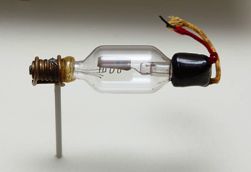 What nation would not like to call one of its sons the inventor of radio and list the priority of a great discovery behind their homeland? That is why disputes among science historians have not ceased for a century.
What nation would not like to call one of its sons the inventor of radio and list the priority of a great discovery behind their homeland? That is why disputes among science historians have not ceased for a century.
The most convincing arguments and opinions are presented, in which there are not so many names: Maxwell (England), Hertz (Germany), Branly (France), Popov (Russia), Marconi (Italy).
But even among them, an American engineer Lee de Forest It seems that the figure, at first glance, is not quite suitable for the role of the founder of the radio. But why, in the homeland of a scientist engineer, in the USA, is his name pronounced in combination with the words “father of radio” and even “grandfather of television”? Indeed, there must be good reason for this. And they are ...
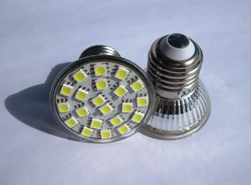 The article talks about the design of LED lamps. Several schemes of different complexity are considered and recommendations are given for the independent manufacture of LED light sources connected to a 220 V network.
The article talks about the design of LED lamps. Several schemes of different complexity are considered and recommendations are given for the independent manufacture of LED light sources connected to a 220 V network.
As a result of the global crisis, the problem of energy conservation has become even more urgent throughout the world. In this regard, from September 1, 2009, in 27 EU countries, the sale of incandescent lamps with a capacity of 100 or more watts has already been banned. And already in 2011 in Europe, it is planned to introduce an embargo on the sale of the most popular 60-watt light bulbs for buyers. By the end of 2012, a complete rejection of incandescent lamps is planned.
The U.S. Congress passed a law on the rejection of incandescent lamps in 2013. According to these laws, residents of the European Union and the United States will completely switch to energy-saving light sources - fluorescent and LED lamps ...
How does resistance change when heating metals
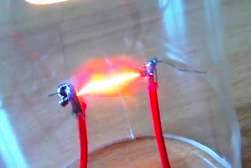 The school physics course describes how the resistance of conductors changes when heated - it increases.
The school physics course describes how the resistance of conductors changes when heated - it increases.
The coefficient of relative increase in resistivity during heating for most metals is close to 1/273 = 0.0036 1 / ° С (differences are in the range 0.0030 - 0.0044). And how does the resistance of a metal change during its melting?
Figure 1 shows a graph of the change in the resistivity of copper during heating. As can be seen, at a melting temperature, a jump in resistance of 2.07 times is observed.
Thus, from normal temperature (20 ° С) to the melting temperature, the specific resistance of copper increases by 5.3 times (coefficient K1), while melting it increases by 2.07 times (coefficient K2), and only 10.82 times. ..
How to choose the right wires for wiring and make a fuse
 For the correct choice of wire cross-section, it is necessary to take into account the value of the maximum current consumed by the load. The current value is easy to determine, knowing the nameplate power of consumers according to the formula I= P / 220 (for example, for an electric heater with a power of 2000 W, the current will be 9 A, for a 60 W light bulb - 0.3 A).
For the correct choice of wire cross-section, it is necessary to take into account the value of the maximum current consumed by the load. The current value is easy to determine, knowing the nameplate power of consumers according to the formula I= P / 220 (for example, for an electric heater with a power of 2000 W, the current will be 9 A, for a 60 W light bulb - 0.3 A).
Knowing the total current of all consumers and taking into account the ratio of the allowable current load for the wire of the open load on the wire cross section (for copper wire 10 A per 1 mm, for aluminum wire 8 A per 1 mm), you can choose a wire.
When performing hidden wiring (in a tube or in a wall), the values given must be multiplied by a correction factor of 0.8. It should be noted that open wiring is usually performed with a wire of at least 4 mm cross section2 based on sufficient mechanical strength ...
Logic chips. Part 7. Triggers. RS - trigger
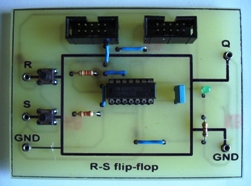 Electronic devices with two stable output states are called triggers. A trigger is translated into one of the stable states by input pulses.
Electronic devices with two stable output states are called triggers. A trigger is translated into one of the stable states by input pulses.
A similar formulation is given, as a rule, in all technical literature. For the one who came across it for the first time, it may not be entirely clear. What are these two states, and why are they called stable?
This is easiest to explain with a simple and accessible example. A fairly close and understandable analogue can be an ordinary light bulb with a switch. There are two states here: on - off. For a trigger, these states are high, low. It is also sometimes said, on - off, installed - reset.
In order to light or turn off the light bulb, just touch the switch. In order for the bulb to continue to burn, it is not necessary to hold the switch with your finger: the bulb will burn indefinitely ...
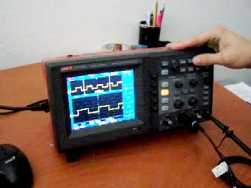 In the previous parts of the article, the simplest devices based on 2I-NOT logical elements were considered. This is a self-oscillating multivibrator and one-shot. Let's see what can be created on their basis.
In the previous parts of the article, the simplest devices based on 2I-NOT logical elements were considered. This is a self-oscillating multivibrator and one-shot. Let's see what can be created on their basis.
Each of these devices can be used in various designs as master oscillators and pulse shapers of the required duration. Given the fact that the article is for guidance only, and not a description of any specific complex circuit, we restrict ourselves to a few simple devices using the above schemes.
A multivibrator is a fairly versatile device, so its use is very diverse. In the fourth part of the article, a multivibrator circuit based on three logical elements was shown. In order not to look for this part, the circuit is shown again in the figure ...
